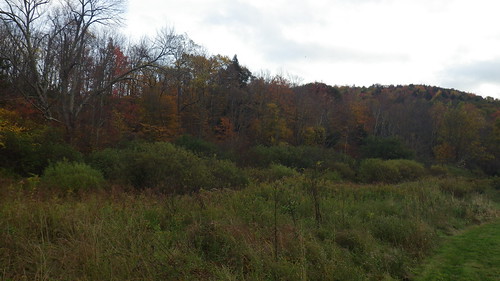Over the past year or so, I’ve been working with a group of current and former University of California San Diego researchers, led by Matt Howland, to create a set of nested Sketchfab models related to the UCSD Edom Lowlands Regional Archaeology Project excavations in the Faynan region of southern Jordan. That project is coming along nicely, and we now have several models of copper production sites, excavation areas, and artifacts linked together with descriptions, as well as professional translations of each page into Arabic.
One of the goals of this project has been to supplement traditional archaeological publication by allowing people to get a more immersive experience of what these things and places are like in person. This got me thinking about the possibility of importing the models into a video game, and since they’re mining sites, the first game that came to mind was Minecraft. Shawn Graham, who is certainly much better than I am at this sort of thing, did a series of posts about creating Minecraft maps using historical maps about a decade ago based on a New York Public Library workflow, and there are quite a few archaeological Minecraft maps on various Minecraft community sites, some of them quite good, so I figured I would give it a go. People still play Minecraft, right?
In principle, what I’m trying to do should be easier than importing historic maps into Minecraft. We already have the 3D models of the sites, including the surrounding terrain, so I don’t need to worry about creating terrain from low-resolution SRTM data, digitizing maps in GIS, etc. This, I foolishly thought, should be pretty easy.
I figured I would start with Khirbat Nuqayb al-Asaymir, the site where I did my dissertation research. We have an OBJ model of the site, so I grabbed that and used ObjToSchematic to turn this into a Minecraft Schematic file. This went smoothly enough, but I did encounter the first of several issues here. ObjToSchematic can use the 3D model texture to select appropriately colored blocks, but it uses a wide range of Minecraft blocks as a “palette,” so the actual landscape, made up of shale hillsides and a sandy valley, gets a bit lost. It’s possible to choose a smaller selection of blocks as a palette, and this should help, but would have taken a bit more time than I wanted to dedicate to this today. The plants and archaeological features also just get created out of the same blocks, and I’m guessing this will take some work in Creative mode to fix. So, I’ll have to update as I experiment a bit more. After correcting the orientation, though, I was able to produce a passable schematic that does look, at least broadly, like the site.
From here, it seemed like the easiest approach would be to create a superflat world without any structures generated to import the model into, so I did that. Initially, I approached the import step using the Amulet editor, the successor of sorts to MCEdit, which doesn’t work on any remotely recent version of Minecraft. Amulet is easy enough to use, but after messing around with it for a few hours, I haven’t really been able to get it to do what I need to do. Initially, I was placing the schematic far up above the world. In retrospect, this probably isn’t a problem, as it would be possible to just set the world spawn there, but I wanted to have the model at ground level. I did this, but the site is essentially in a valley between two hills, so some ended up below ground level and Amulet filled this with water, which is not very accurate for Faynan. I figured the way around this would be to set everything to a desert biome, and this did work to remove the water. For a reason I haven’t been able to determine, though, the lighting is just always off on the maps I create in Amulet, and parts always end up looking pitch black regardless of where I place the schematic. I’m sure there’s a way to fix this, but I ended up trying another map editor instead.
I installed WorldEdit, which I was initially reluctant to use since it’s a Minecraft mod rather than a program in its own right, but it was simple enough to import the schematic into the world. Unlike Amulet, the lighting looks pretty normal and I was able to run around and take a look at the Minecraft version of the site.
A Minecraft archaeologist in the digital Area Z at the digital Khirbat Nuqayb al-Asaymir.
Obviously, it still needs a lot of work before it’s useful for much of anything, but it’s still fun to see the site in Minecraft after, all things considered, not all that much work. This isn’t a primary goal of the project, but I’m still interested to get it working, so we’ll see where it goes from here.



